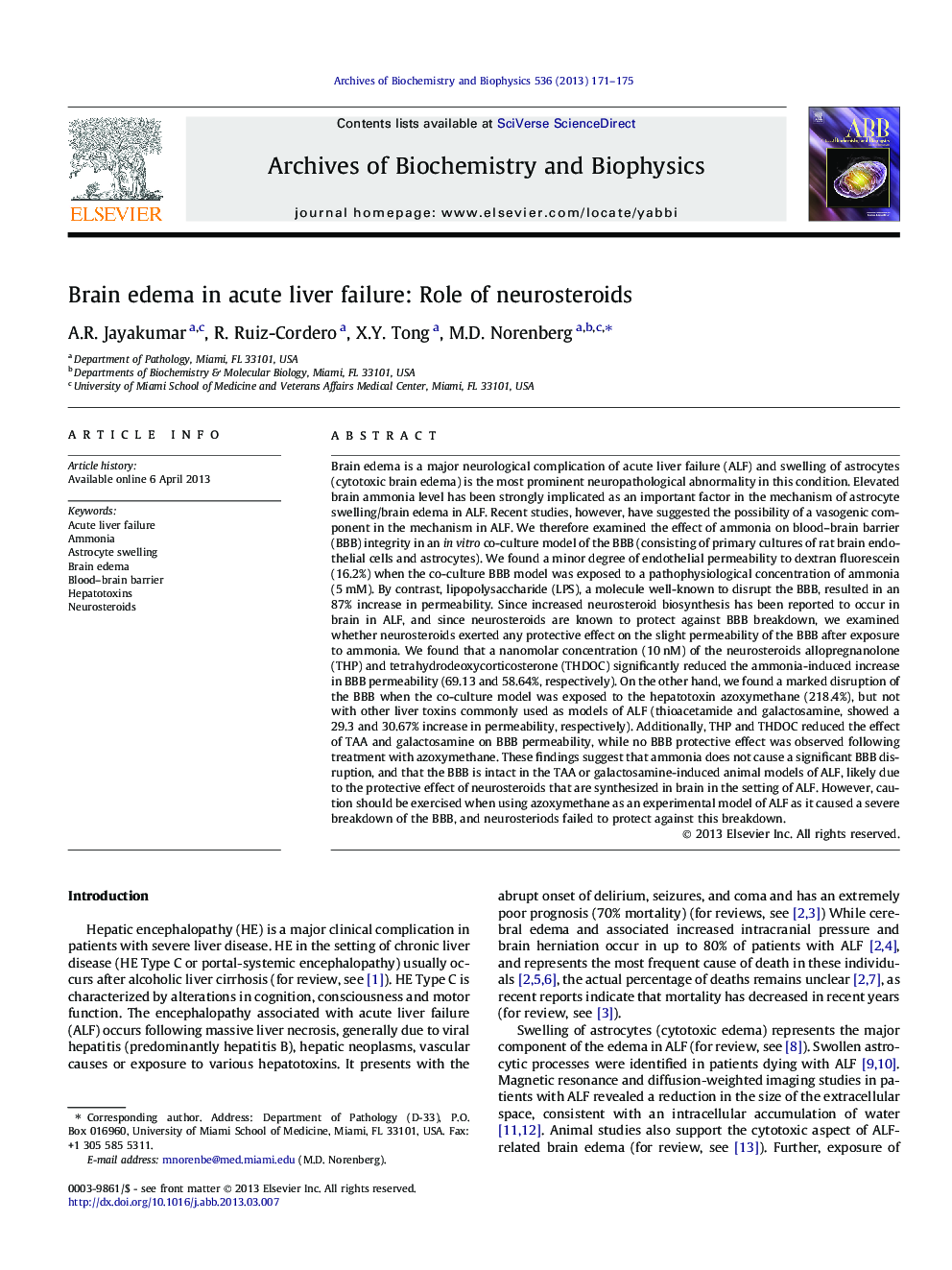| کد مقاله | کد نشریه | سال انتشار | مقاله انگلیسی | نسخه تمام متن |
|---|---|---|---|---|
| 1925343 | 1536366 | 2013 | 5 صفحه PDF | دانلود رایگان |

• Studies have suggested the possibility of both cytotoxic and vasogenic edema in ALF.
• Ammonia had no effect on the permeability of the BBB in an in vitro model.
• TAA and galactosamine did not cause BBB breakdown in an in vitro model.
• Lipopolysaccharide and azoxymethane severely break the BBB in an in vitro model.
• Neurosteroids protect the BBB after TAA and galactosamine but not with azoxymethane.
Brain edema is a major neurological complication of acute liver failure (ALF) and swelling of astrocytes (cytotoxic brain edema) is the most prominent neuropathological abnormality in this condition. Elevated brain ammonia level has been strongly implicated as an important factor in the mechanism of astrocyte swelling/brain edema in ALF. Recent studies, however, have suggested the possibility of a vasogenic component in the mechanism in ALF. We therefore examined the effect of ammonia on blood–brain barrier (BBB) integrity in an in vitro co-culture model of the BBB (consisting of primary cultures of rat brain endothelial cells and astrocytes). We found a minor degree of endothelial permeability to dextran fluorescein (16.2%) when the co-culture BBB model was exposed to a pathophysiological concentration of ammonia (5 mM). By contrast, lipopolysaccharide (LPS), a molecule well-known to disrupt the BBB, resulted in an 87% increase in permeability. Since increased neurosteroid biosynthesis has been reported to occur in brain in ALF, and since neurosteroids are known to protect against BBB breakdown, we examined whether neurosteroids exerted any protective effect on the slight permeability of the BBB after exposure to ammonia. We found that a nanomolar concentration (10 nM) of the neurosteroids allopregnanolone (THP) and tetrahydrodeoxycorticosterone (THDOC) significantly reduced the ammonia-induced increase in BBB permeability (69.13 and 58.64%, respectively). On the other hand, we found a marked disruption of the BBB when the co-culture model was exposed to the hepatotoxin azoxymethane (218.4%), but not with other liver toxins commonly used as models of ALF (thioacetamide and galactosamine, showed a 29.3 and 30.67% increase in permeability, respectively). Additionally, THP and THDOC reduced the effect of TAA and galactosamine on BBB permeability, while no BBB protective effect was observed following treatment with azoxymethane. These findings suggest that ammonia does not cause a significant BBB disruption, and that the BBB is intact in the TAA or galactosamine-induced animal models of ALF, likely due to the protective effect of neurosteroids that are synthesized in brain in the setting of ALF. However, caution should be exercised when using azoxymethane as an experimental model of ALF as it caused a severe breakdown of the BBB, and neurosteriods failed to protect against this breakdown.
Journal: Archives of Biochemistry and Biophysics - Volume 536, Issue 2, 15 August 2013, Pages 171–175